
Culture China
18:18, 01-Feb-2019
What you should know about the Chinese New Year
Updated
12:48, 04-Feb-2019
Wu Yan
04:59
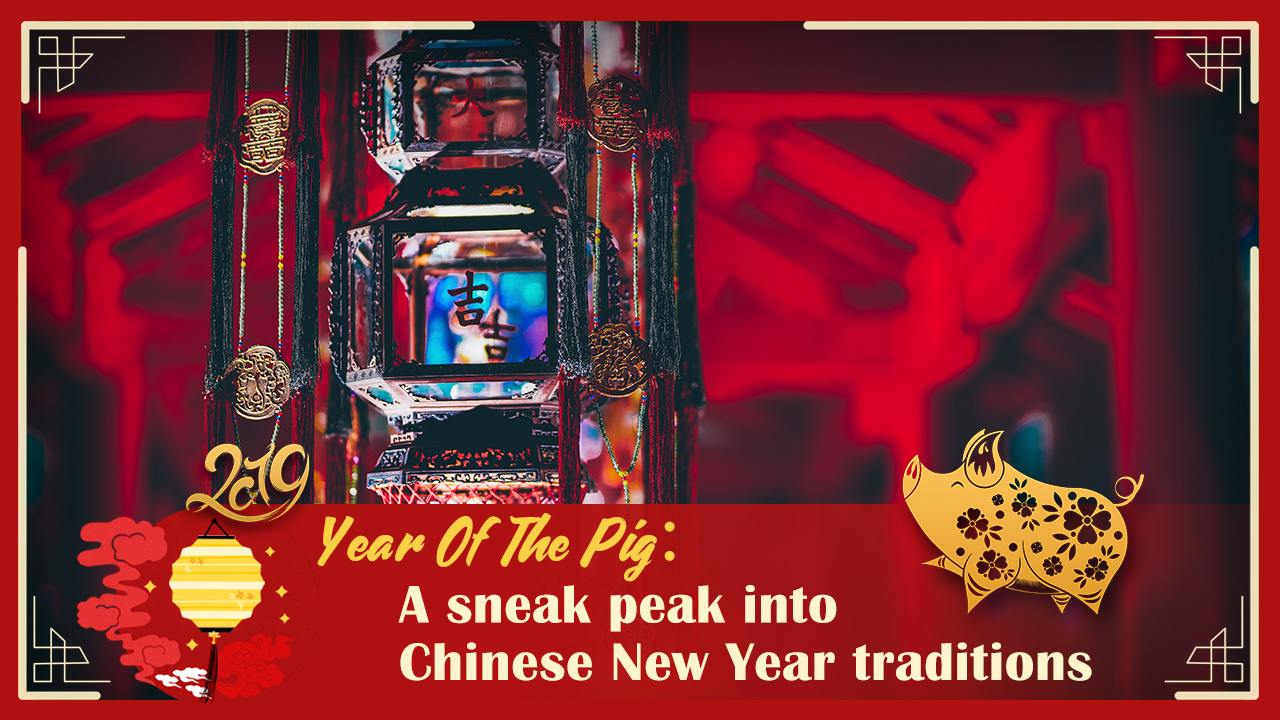
It is known to all that Spring Festival is the biggest celebration for Chinese to welcome Chinese New Year.
But how did the Chinese New Year come about and why celebrate it? Let's start with some interesting legends.
The legends of Nian
There are two different stories of the monster Nian, which means year in Chinese, that are popular among Chinese communities.
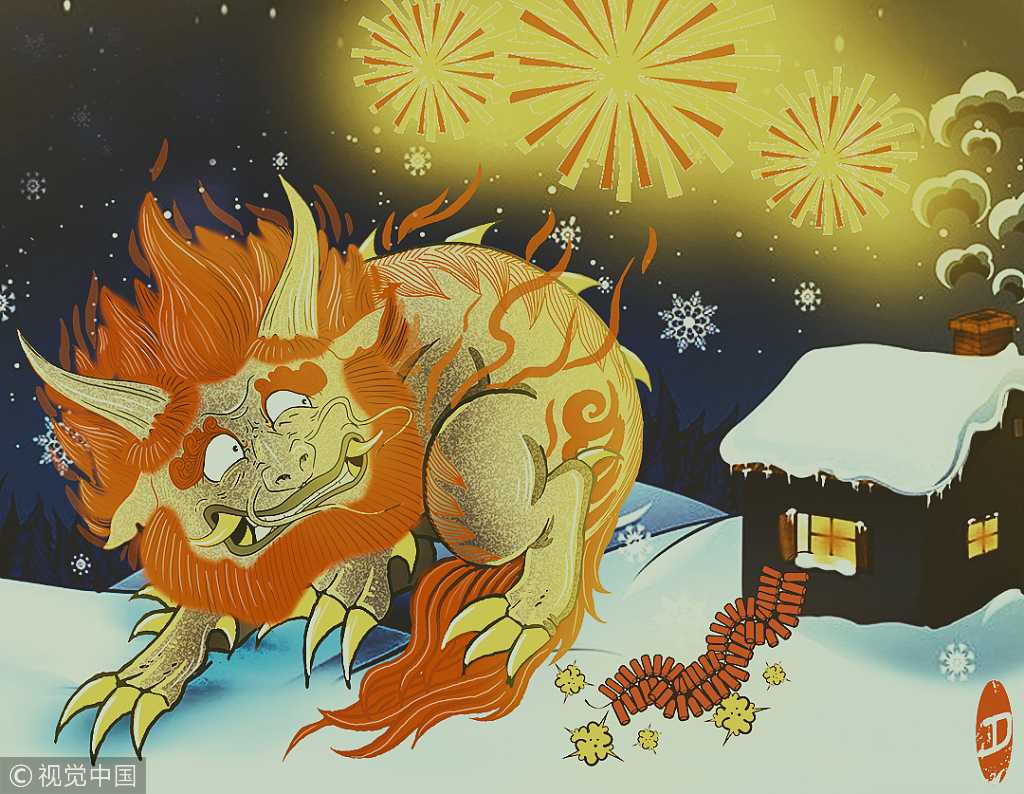
An illustration shows monster Nian being afraid of loud noise. /VCG Photo
An illustration shows monster Nian being afraid of loud noise. /VCG Photo
According to "Nian's story" published in the Xinmin Evening News in 1959, the monster Nian has two dreadful heads, four ears and eight legs and lives on eating people. It sleeps all the year round until the night of New Year's Eve when it crawls out of its cave and looks for food.
Nian is afraid of daylight, red color and especially loud noise. As a result, people put up red couplets on doors, red paper cuttings on windows and light up red lanterns on the New Year's Eve. They also set off firecrackers and beat drums to scare it away.
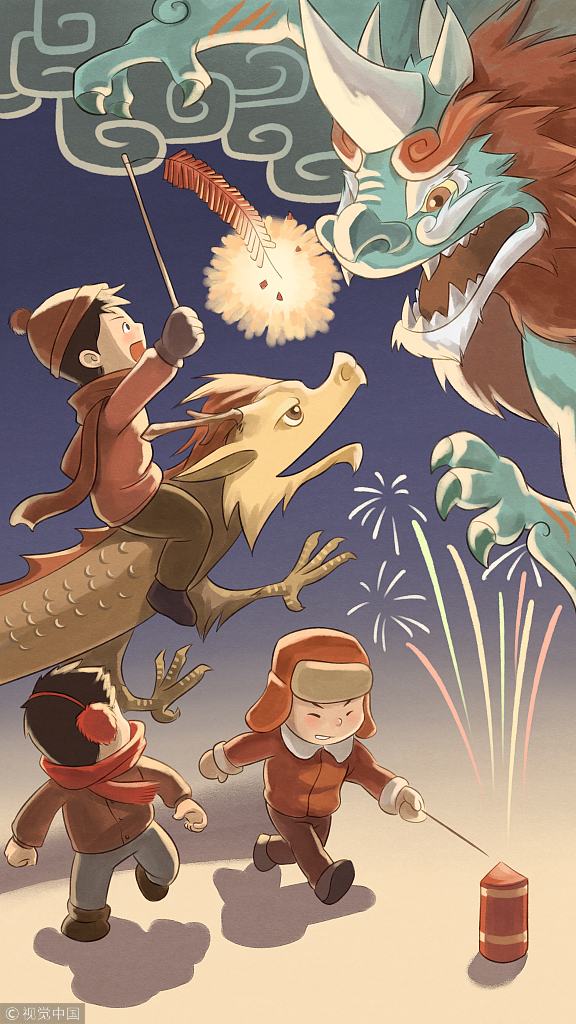
An illustration shows children scaring away monster Nian. /VCG Photo
An illustration shows children scaring away monster Nian. /VCG Photo
In another version, Nian turns into a fairy child and a new monster Xi comes on the stage. "The story of how Nian kills Xi," created by fairytale writer Guo Mingzhi, was first published in 1981 and was adapted into a papercut animation in 1984.
According to the animation, monster Xi harasses people every New Year's Eve. The kitchen god fights against it to protect people but fails, so he asks other gods for help. Fairy child Nian volunteers and uses red silk band and firecrackers to kill it.
To commemorate hero Nian, people call the New Year's Eve "Chu Xi", meaning kill Xi, and the first day of Chinese New Year, Nian. They also employ firecrackers and red couplets (evolving from red silk bands) to safeguard their homes.
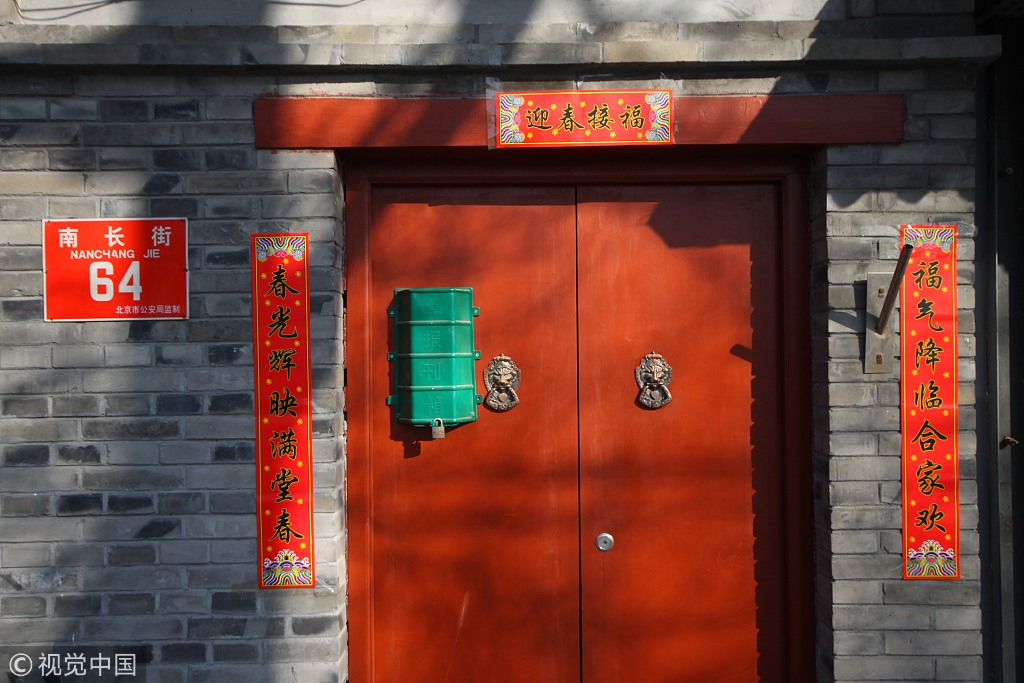
Couplets posted on a door in Beijing. /VCG File Photo
Couplets posted on a door in Beijing. /VCG File Photo
As modern people wish to give Chinese New Year a special meaning, the legend stories of Nian are quite new.
The history of Nian
About 4,000 years ago in the Xia Dynasty (c. 21st century-16th century BC), Chinese ancestors were recorded celebrating the New Year, which was called Sui then. Sui, a tool similar to an axe, is used for harvesting crops and also used in worship sacrifice.
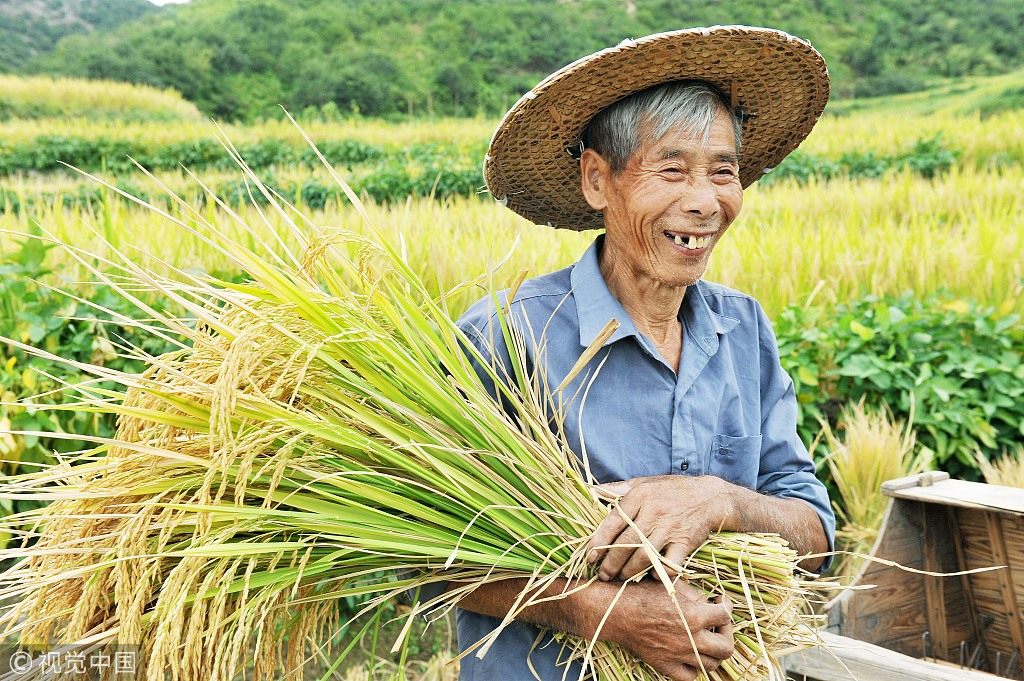
Crops are harvested in Hengfeng county, Jiangxi Province, September 16, 2018. /VCG Photo
Crops are harvested in Hengfeng county, Jiangxi Province, September 16, 2018. /VCG Photo
In the Shang Dynasty (c.16th century-11th century BC), sacrificial worship was highly valued and the New Year was called Si, meaning sacrifice. Also at the time, the character Nian was created in the form of oracle bone inscriptions, which means harvest.
It was until the Zhou Dynasty (c.11th century-771 BC) that the New Year was eventually called Nian, which shows Zhou people attached great importance to agriculture. And it was then the custom of celebrating New Year was settled.
Although celebrations have always been held in Chinese history, the time to welcome the New Year changed in different dynasties. In the Zhou Dynasty, the New Year started after the tenth month of today's lunar calendar; In the Qin Dynasty (221-206 BC), in the tenth month; and In the Han Dynasty (206 BC-AD 220), Emperor Wu rolled out a new calendar and stipulated the first month to be the start of the New Year.
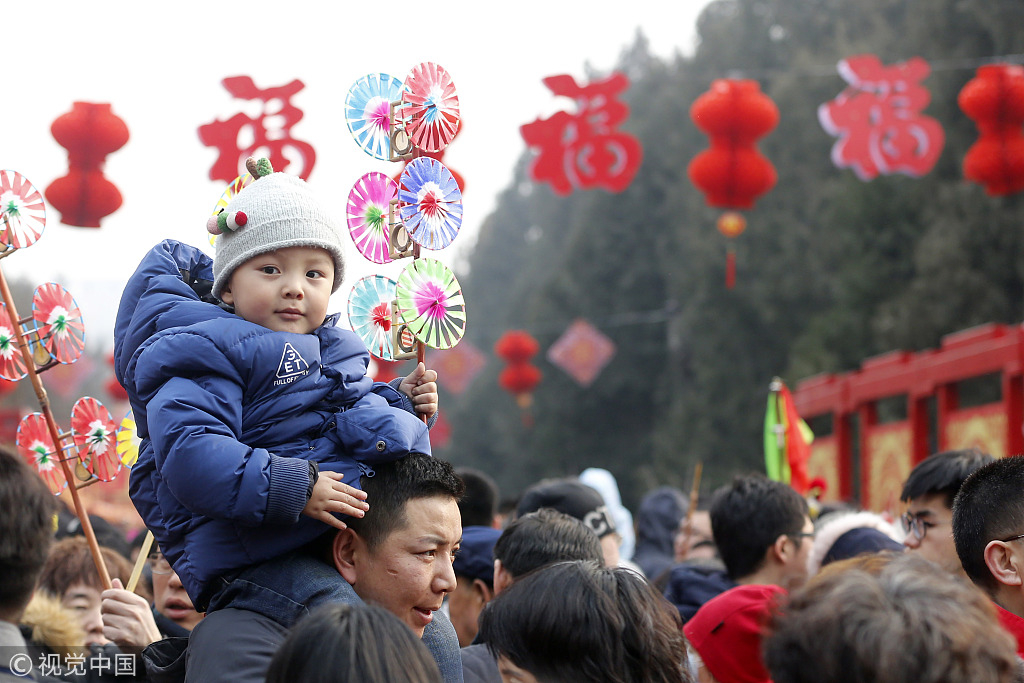
People visit the Temple of Earth during Spring Festival in Beijing, February 19, 2018. /VCG Photo
People visit the Temple of Earth during Spring Festival in Beijing, February 19, 2018. /VCG Photo
In modern times, with the Gregorian calendar being universally used around the world, how has the Chinese New Year been affected?
In 1913, the then Chinese government with Yuan Shikai as the ruler decided to use the Gregorian calendar, stipulating January 1 as New Year's Day, and the first day of the first month in lunar calendar, the Chinese New Year, as Spring Festival.
Today, the Chinese New Year is honored around the world, with other countries celebrating the festival as the Chinese do.
Video Production Team
Reporter: Nick More
Filmed by: Geng Zhibin, Mi Xue
Film Editor: Geng Zhibin, Mi Xue
Producer: Wen Yaru
Chief Editor: Wang Dewei, Pei Jian
Supervisor: Pang Xinhua

SITEMAP
Copyright © 2018 CGTN. Beijing ICP prepared NO.16065310-3
Copyright © 2018 CGTN. Beijing ICP prepared NO.16065310-3